
Issue 080
October 2011
Sparring is important but working the pads gives you a great opportunity to work on your fundamentals
Pete Irving is a professional welterweight fighter and Fighters Only’s resident fight expert.
Working the pads is an essential training tool for learning and staying sharp as a striker. A good pad man will observe stance and movement, correcting balance, foot position and angles of connection with the shins, hands, knees and elbows. Additional foot movements made when advancing and retreating or after punching and kicking can cost vital milliseconds, impairing defense. An attentive pad man can help eradicate these.
Holding pads is as much a skill as hitting them. Too little resistance can cause the striker injuries from overextension; too much resistance can cause hand, elbow or shoulder injuries.
The pads shouldn’t travel too far as to do the work for the athlete. Bringing the pad too close will affect the technique and sense of distance of the striker. A few centimeters will be sufficient to add resistance. Getting the timing right is necessary to meet the strike. For a fighter, holding pads for another can help you learn to observe your opponents and time your defense.
TWO-STAGE COMBINATION
STAGE ONE: 1-2, RIGHT-KICK CHECK, 2-3, RIGHT BODY KICK
Begin by working each shot individually over the first round (1 = jab, 2 = right cross, 3 = left hook). Over the next round string together the 1-2 right-kick check combination. Then practice the 2-3 body kick in the third round. In the fourth, put them together.
STAGE 2: LEFT HEAD KICK BLOCK, LEFT HOOK, RIGHT BODY KICK, left-kick check
In the next round start by blocking the left head kick, stepping off with a left hook and finishing on a body kick before checking the left kick.
Finally, in the sixth round bring those two long combinations together. When the pad man calls “power,” work the shots individually for power. When the pad man calls “flow,” have the shots smoothly strung together for fluency of motion.
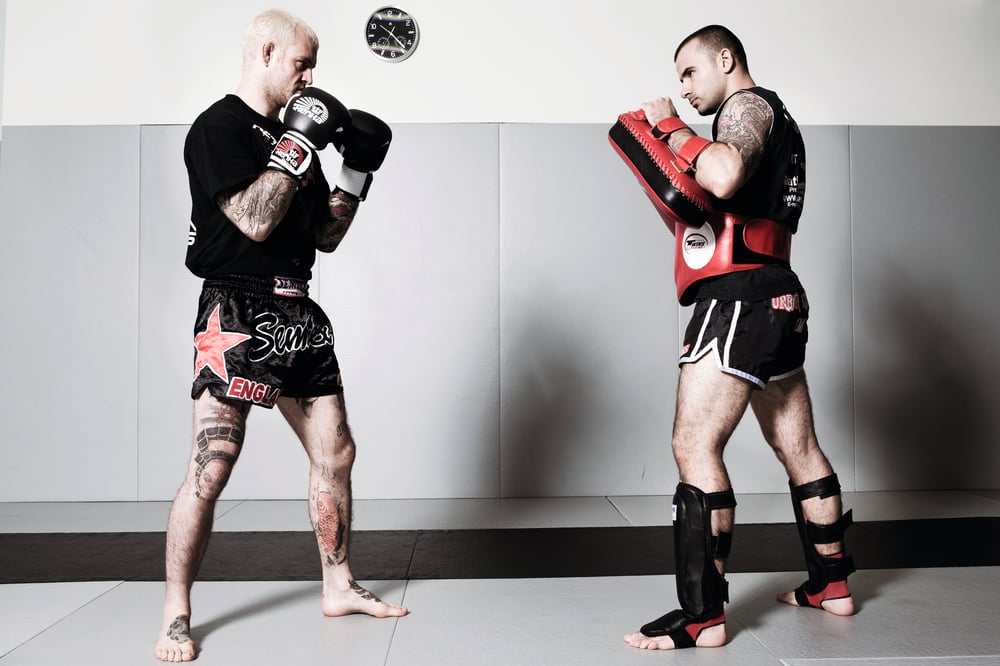
1 Pete is ready in his stance, hands in punching position. Mariusz is holding the Thai pads, wearing a body shield and shinpads.
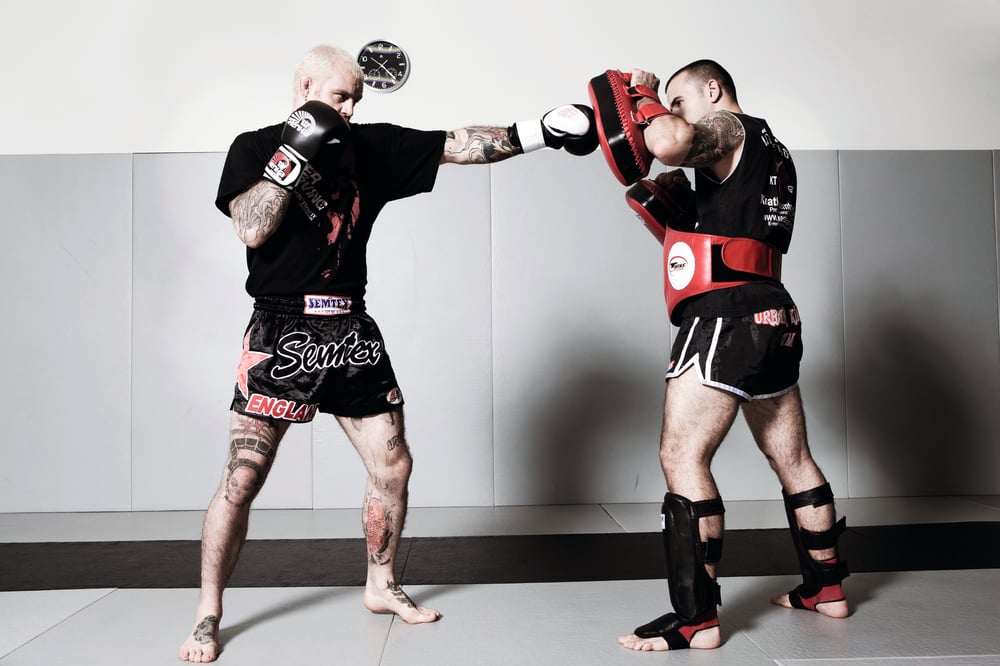
2 Mariusz shows the jab, and Pete throws the jab, keeping the elbow down and rotating out to the extent of his reach.

3 Pete throws the right cross, twisting his back foot and rotating his arm and shoulder to reach the pad. Be careful not to lift up the toe and lean forward with the punch. Make sure the head and torso don’t move forward, and grind the back foot into the floor.
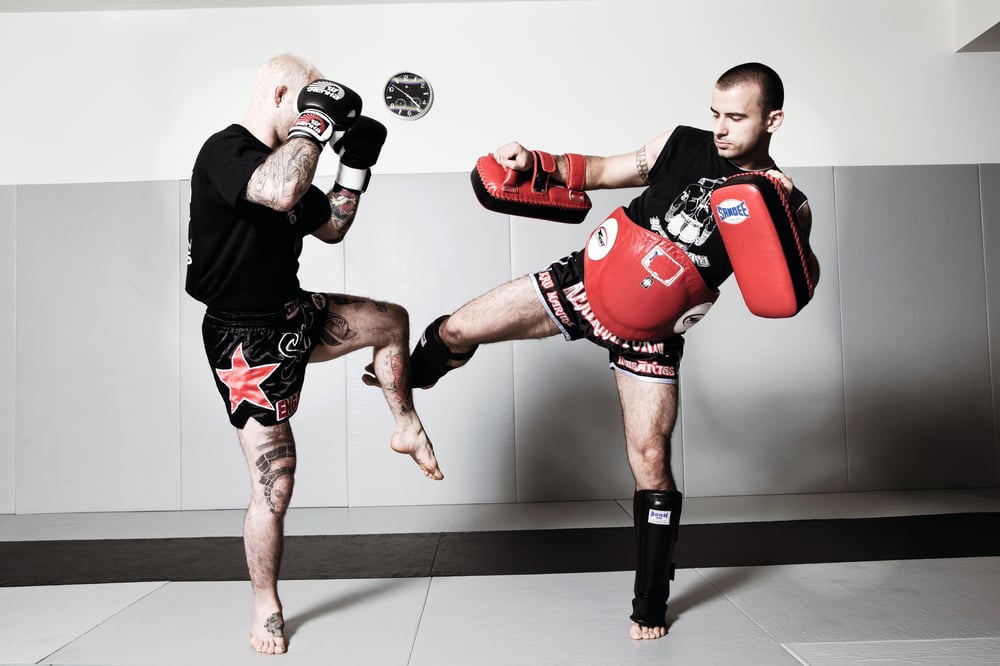
4 Mariusz tests Pete’s stance and reactions with a low kick. Pete checks shin-on-shin, toes down, engaging the hip. If Pete’s hip is weak or his stance is rotated in, the kick would knock him off balance.
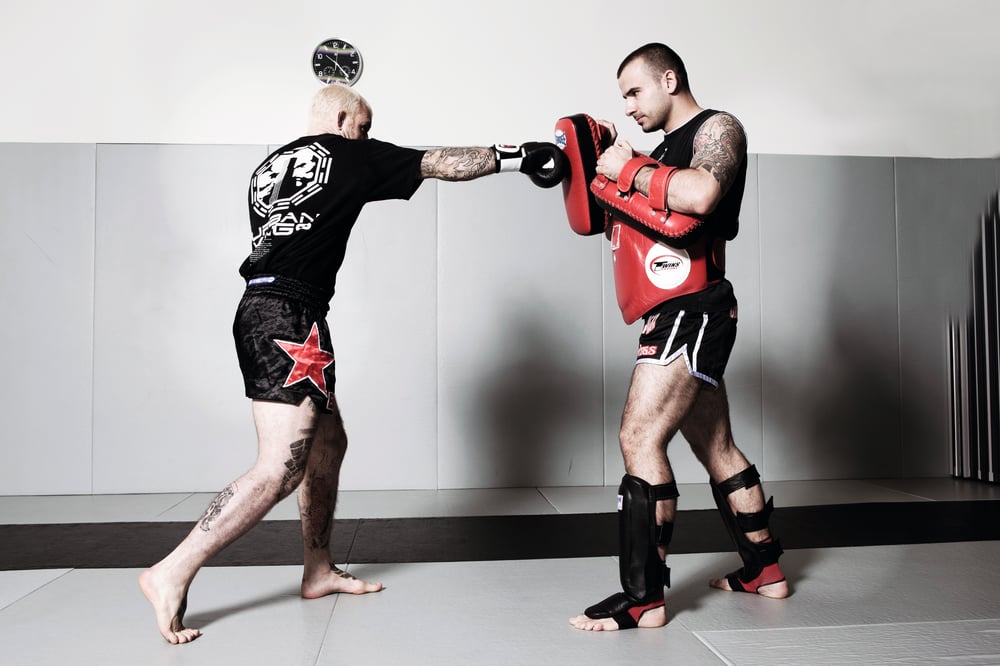
5 Pete replies with another right cross.

6 The rotation of a right cross sets Pete up to twist back for a left hook, rotating the lead foot.
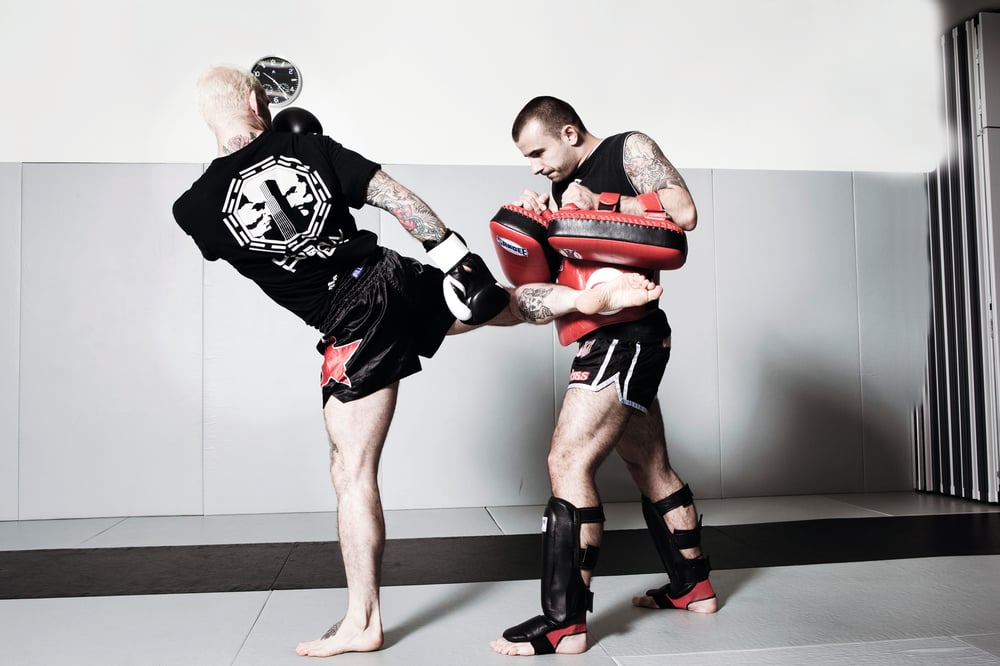
7 In turn, the rotation of the left hook sets Pete up for a right body kick, twisting the left leg through to extend the hip.

8 Pete steps back directly into his stance after the kick. Mariusz ensures that Pete is in a good stance and doesn’t need to make an adjustment to his foot position by forcing him to defend the counter immediately. Pete blocks the left head kick with both forearms, absorbing the force of the kick by keeping his arms in close to his body.

9 Pete pivot steps away from the left kick, moving the lead leg first, then angling off with the back leg.

10 Pete is now ideally placed to chop the right body kick again across Mariusz’s belly pad.

11 Mariusz tests Pete’s return to stance again by throwing a left kick. Pete checks, demonstrating his balance and stance is correct.
DEFENDING AND COUNTERING KICKS

1 Pete is ready to strike, Mariusz has the pads
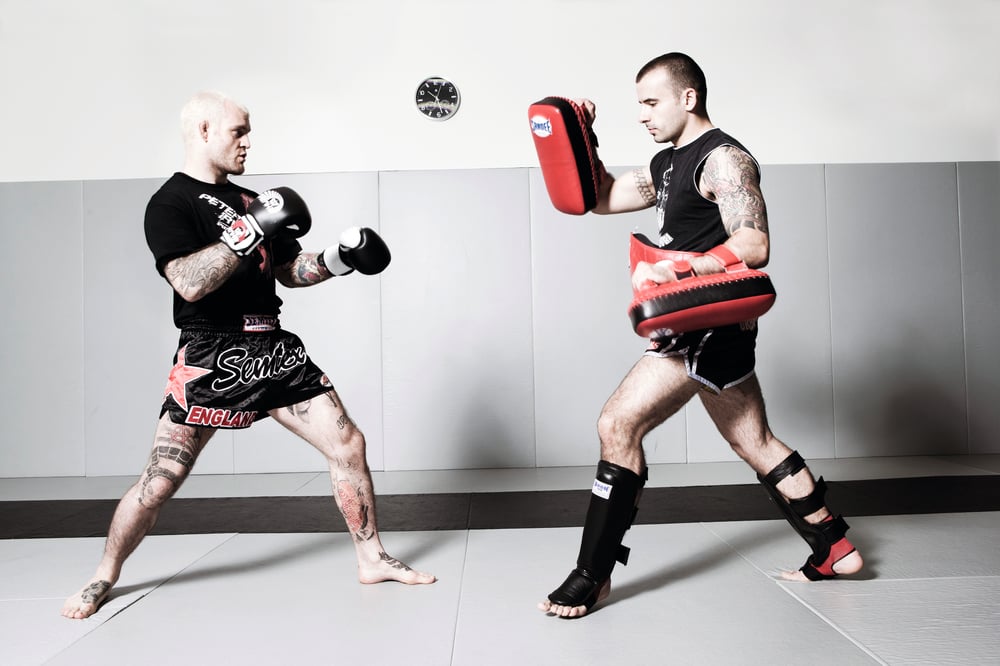
2 Mariusz steps forward, signaling that he is about to kick, Pete starts to step his rear leg back, but the lead leg remains in place.
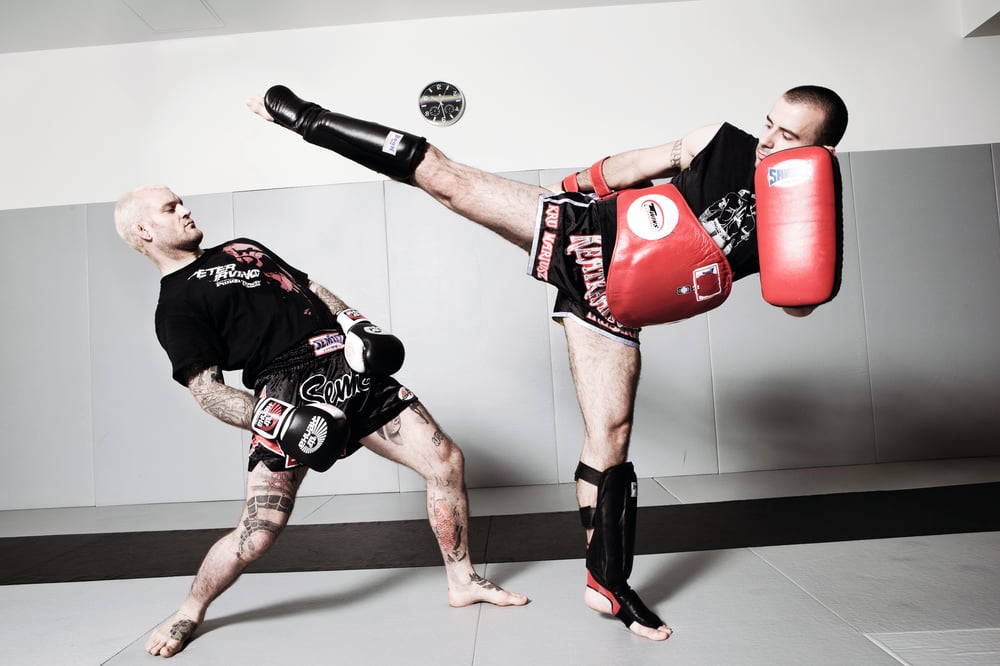
3 Pete slips the head kick, leaning back
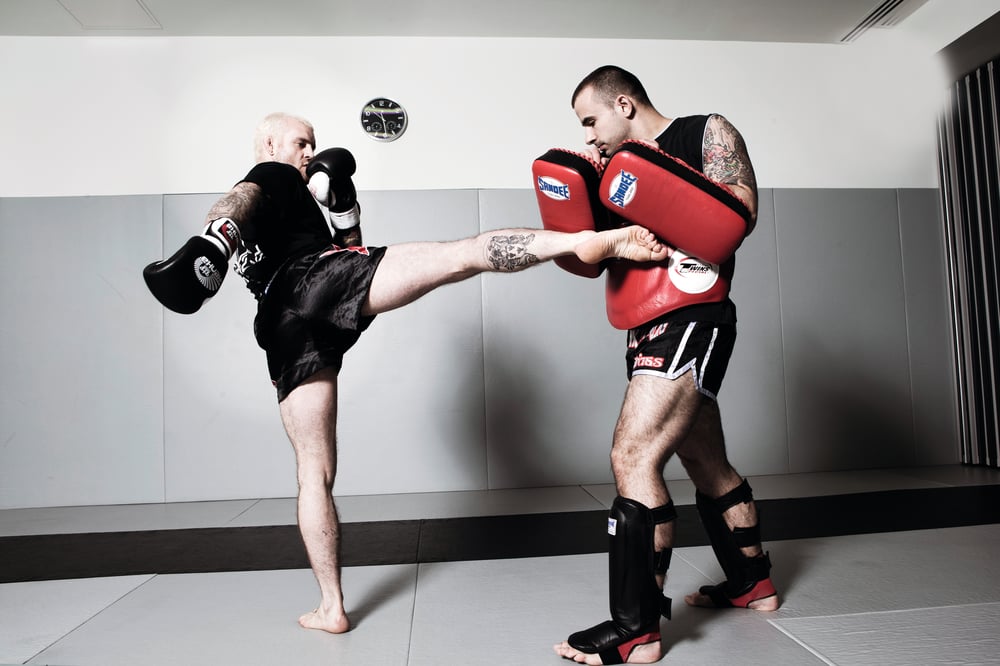
4 Mariusz lands back in his stance. Pete recovers his stance and adds the force to his right body kick return. Pete throws his balance hand back, and covers with the left hand.
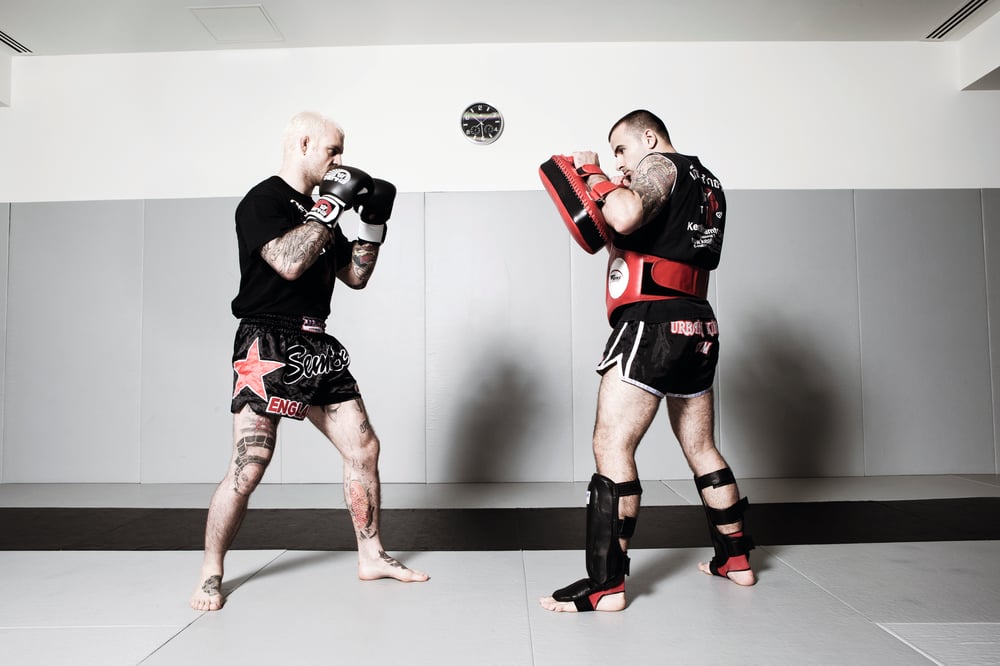
5 Pete returns to his stance.
DEALING WITH THE TEEP
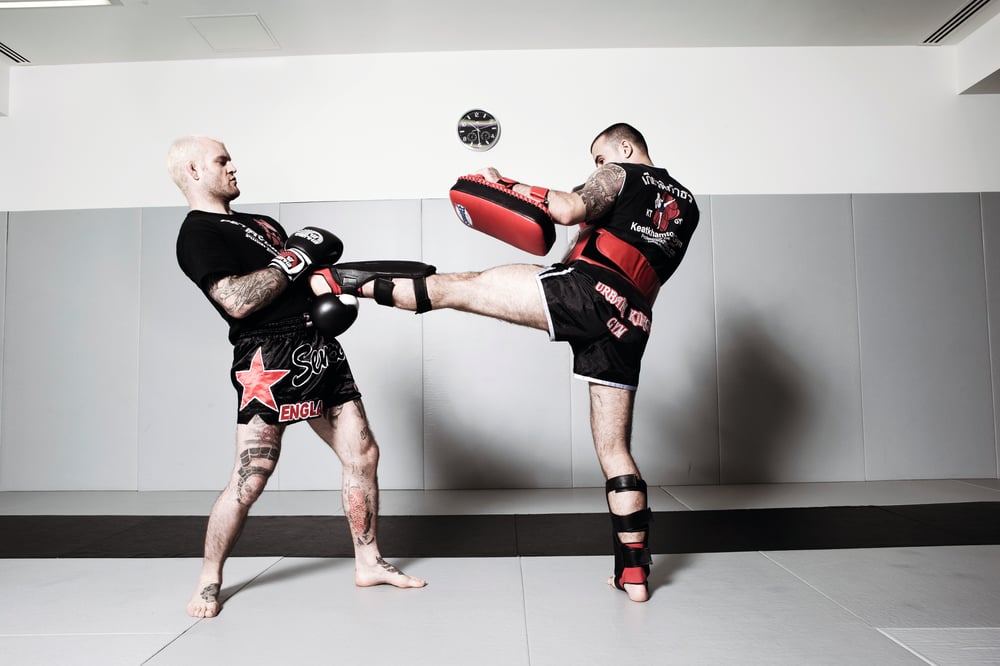
1 Mariusz throws a teep with his lead leg. Pete catches the teep, left hand under the heel, right hand gripping the toes. Pete slips his head back a little, tucking his chin.

2 Pete pushes Mariusz away with both hands
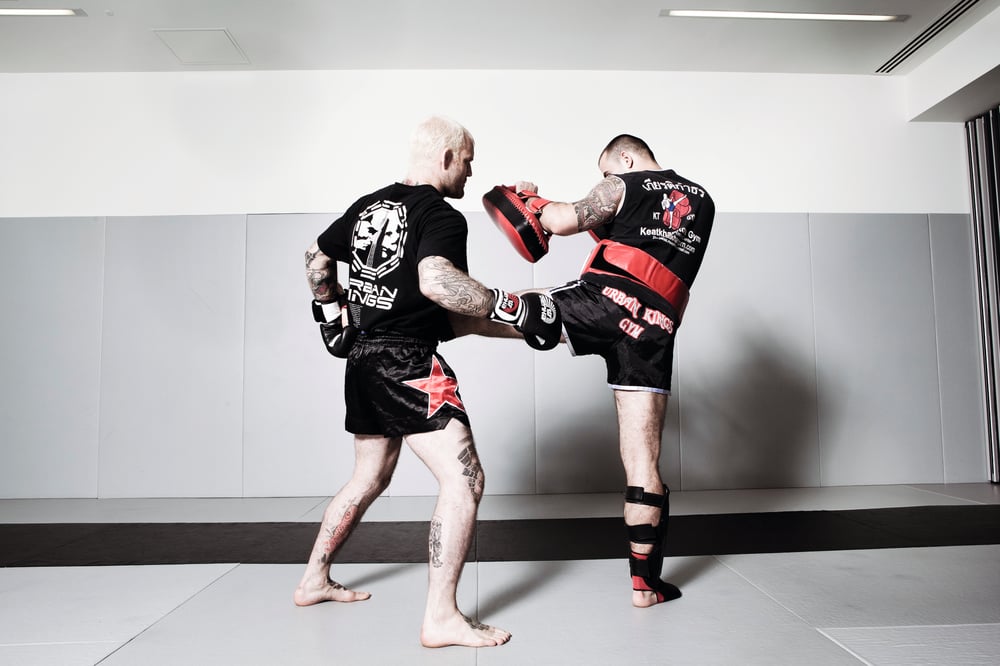
3 Pete steps past Mariusz, switching stance as he moves to Mariusz’s blindside

4 Pete smashes a left hook into the pad.
ALTERNATIVE TEEP COUNTER: PARRY TO THE OUTSIDE
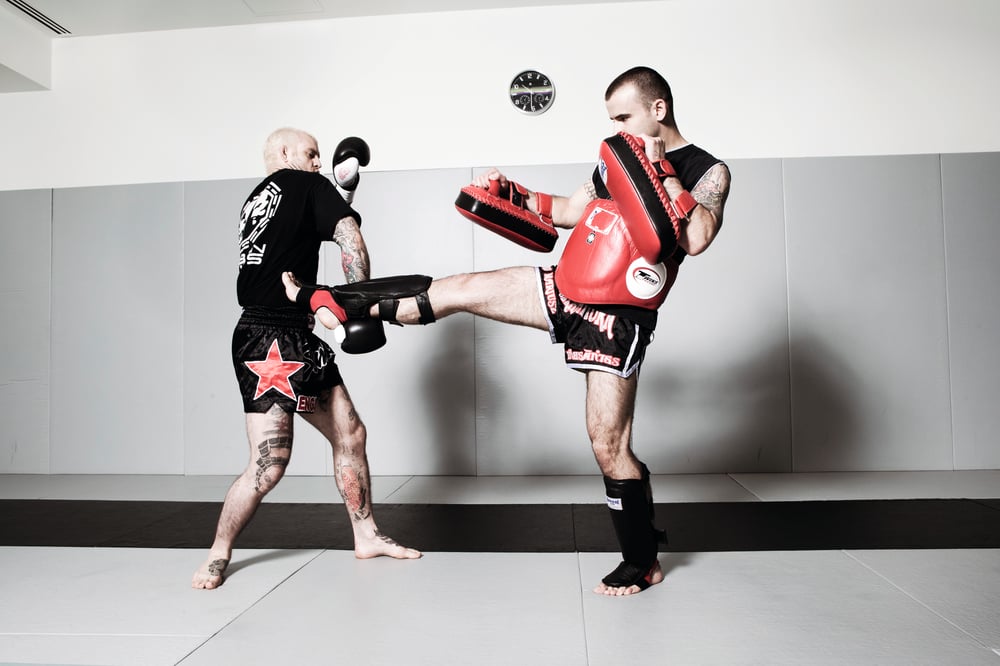
1 Mariusz teeps off the back leg. Pete scoops it with the lead hand, thumb turned towards himself, redirecting the kick outside his body.
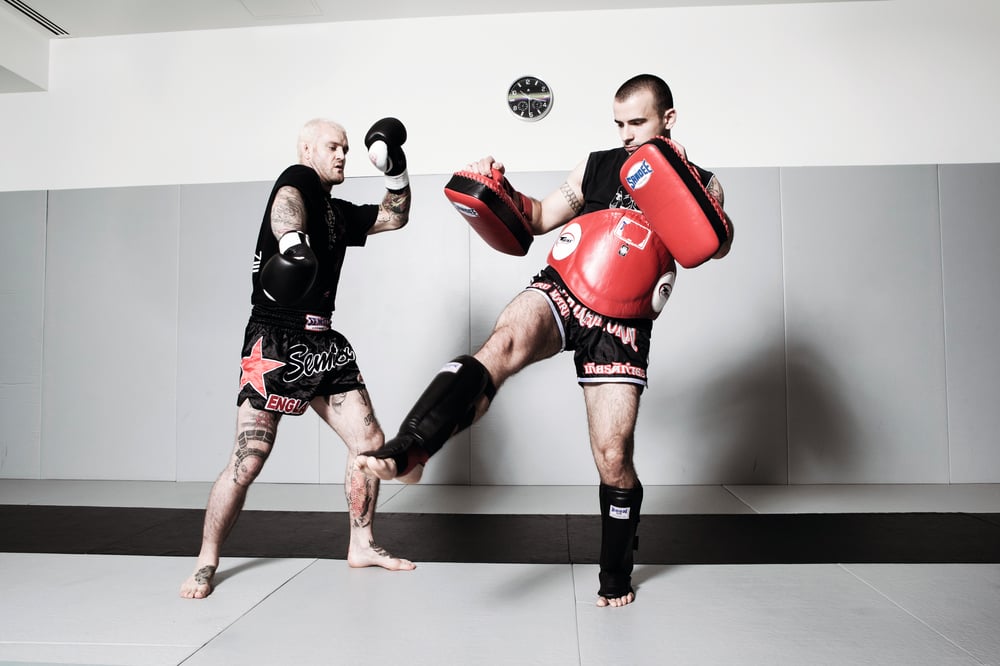
2 Mariusz’s body is turned to the side
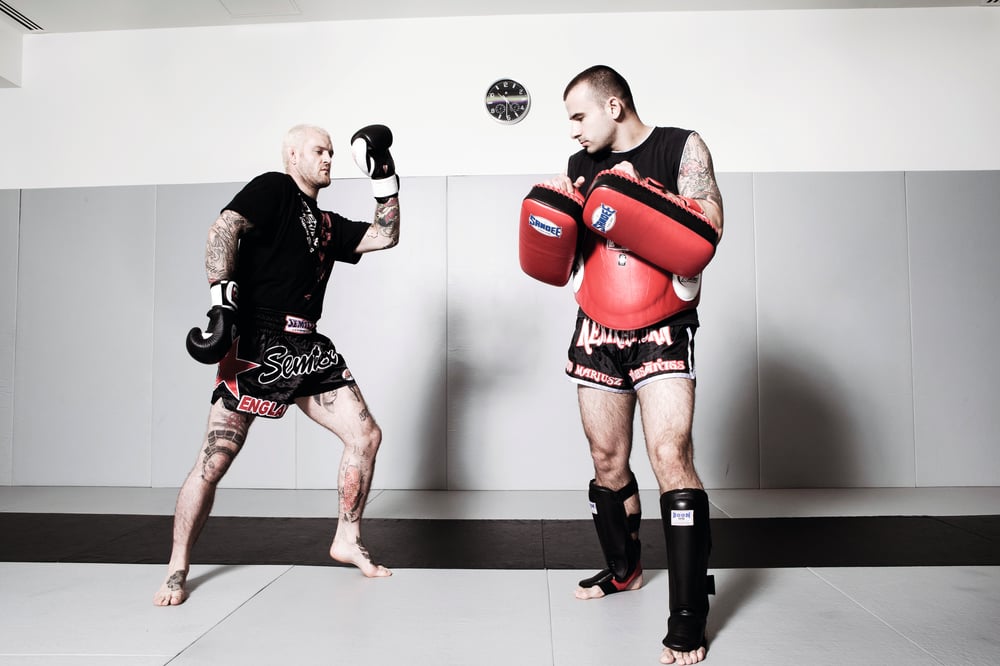
3 He lands, showing a right body kick on the pads
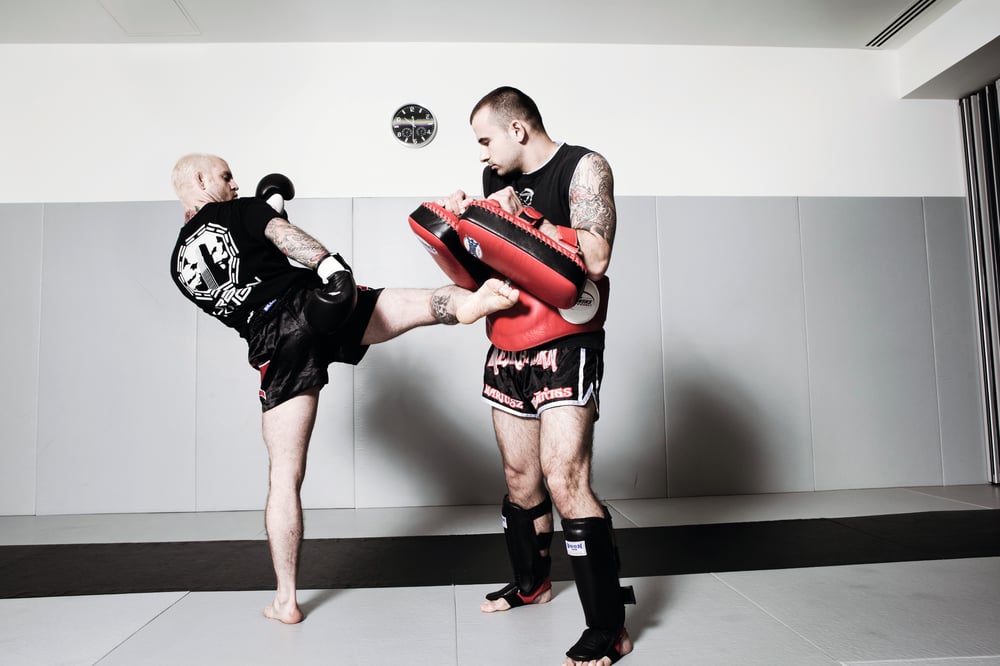
4 Pete throws the body kick, twisting through.
...









